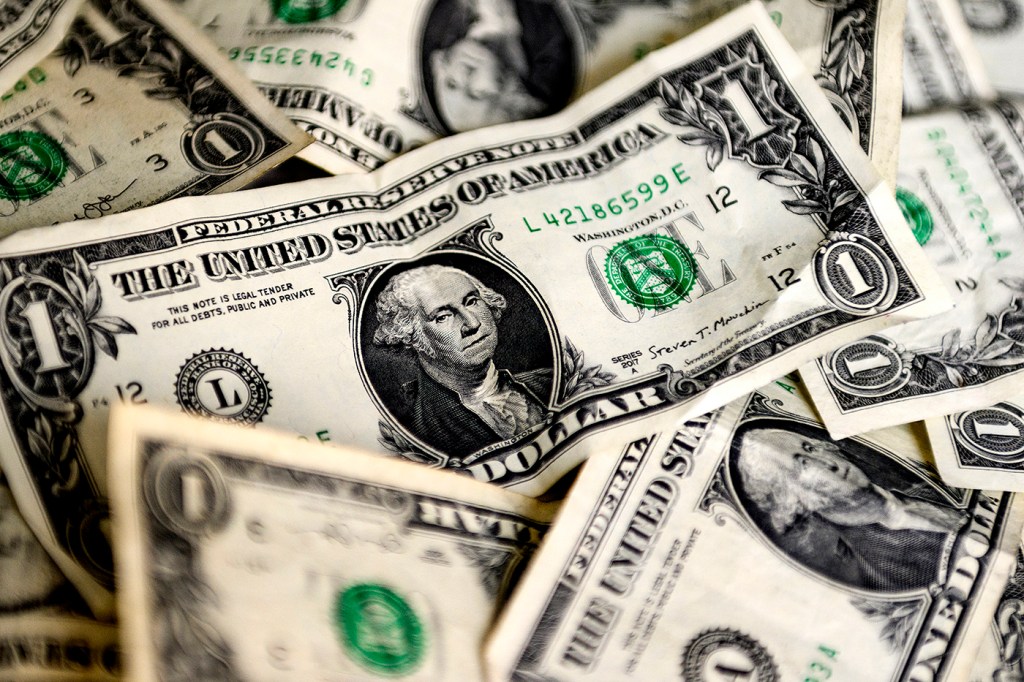What would a debt default mean for the U.S. dollar?

We’ve heard this song before.
With June 1 as the Treasury Department’s deadline, U.S. lawmakers are again up against the wall to make a deal to avoid a catastrophic default on the country’s debt.
Disaster scenarios abound—part of the spectacle of brinksmanship that the public has grown accustomed to in this moment of extreme polarization. The consequences of a debt default would be, as the headlines suggest, “very bad,” says Nancy Kimelman, an assistant teaching professor in economics at Northeastern.
A default would mean that U.S. Treasury Bonds—long considered “risk-free”—will take on more risk than previously assumed, Kimelman says. The nation’s credit rating would most likely be downgraded—although it may not happen immediately following a default—meaning the U.S. Treasury would have to pay more in interest on future borrowing.
But a default wouldn’t just impact the U.S. Treasury. Its effects would cascade through the financial markets, making all assets riskier and leading to falling stock prices and rising interest rates. Even the U.S. dollar would likely take a hit, which, Kimelman says, would benefit China and Russia.
In fact, China and Russia have been working to diminish the influence of the dollar—an effort that became clear recently when Russia said it would be using the Chinese yuan in settlements between “Russia and the countries of Asia, Africa and Latin America.”
“The fact of a U.S. government default on its debt just gives more ammunition to the Chinese and the Russians to unseat the dollar as the clear global currency,” Kimelman says.
The dollar has reigned supreme worldwide for most of the 20th century—a sure sign of the U.S.’s political and economic standing on the global stage, Kimelman says. Though there are countries that wish to see the dollar diminished, she says, the currency isn’t trending downward. Rather, the dollar goes through cyclical periods of strengthening and weakening that may be tied to geopolitical events and other pressures.
“I don’t think we’re seeing any long-term trend” with regard to the U.S. dollar, Kimelman says. “Our inflation is no worse than Europe’s inflation, for instance. And we still have a very independent central bank, which is key in giving the rest of the world confidence in our interest rates.”
“China is anxious for countries to buy and sell products using the Chinese currency,” Kimelman continued. “But right now the vast majority of their business is priced in dollars, and payments are made in dollars as well.”
The fiercely divided Congress now has only three weeks to come up with a plan to raise the nation’s borrowing limit—a timetable that has elicited mixed reactions and varying degrees of urgency.
“We have learned from past debt limit impasses that waiting until the last minute to suspend or increase the debt limit can cause serious harm to business and consumer confidence, raise short-term borrowing costs for taxpayers, and negatively impact the credit rating of the United States,” Janet Yellen wrote to lawmakers earlier this month.
Kimelman says that, while it’s highly unlikely U.S. officials will let the debt crisis continue to spiral into default, the seemingly routine game of chicken worries her.
“The language is quite similar to what’s been said before,” Kimelman says. “Each side stakes out a position and insists they’re not going to bridge from it. The real issue to try and figure out is whether the folks who are refusing to bend and say, OK, let’s reach a deal, have more gumption than they did before.”
Last week, former President Donald Trump suggested that Republican lawmakers should let the nation default if the Democrats don’t give in to their demands.
“I was absolutely horrified that a presidential candidate would say that,” Kimelman says. “It makes me wonder if that attitude hasn’t lived on in the GOP.”
Tanner Stening is a Northeastern Global News reporter. Email him at t.stening@northeastern.edu. Follow him on Twitter @tstening90.





